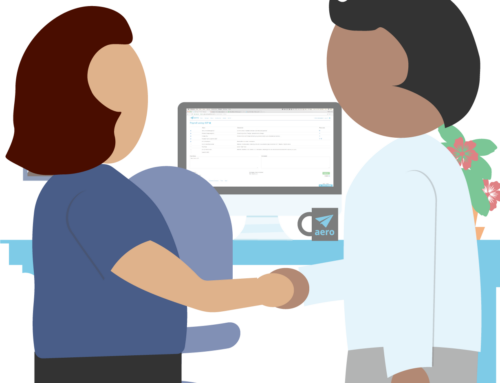Founded in Silicon Valley in 2005, our CAS firm migrated to cloud-based apps in 2011. Collaboration between our firm and clients improved and staff location (office vs home office) became less and less of a factor. Soon we were operating as a 100% virtual firm. Running a virtual firm allows you to reduce the overhead associated with facilities and infrastructure, expand your talent pool, maximize productivity, optimize time by cutting out commutes, and improve quality of life for staff. If you’re considering transitioning your CAS firm to a virtual one, pay attention to a few key areas.
What is a Virtual Firm?
Some brick and mortar CAS firms have remote staff or allow on-site staff to work remotely at times. A virtual CAS firm has a distributed workforce with no central office location for staff or clients. All communication, meetings, and work are done in the cloud.
Hiring the Right Staff is Key to Running a Virtual Firm
How you find, interview, hire, and train your staff is the foundation of how successful you will be in running a virtual accounting or bookkeeping firm. Not everyone is suited to work remotely. Our staff must be tech-enthusiasts, self-disciplined, and willing to work alone for long stretches of the day.
Selecting the wrong person is a momentous waste of everyone’s time and energy. Our firm runs by a core set of defined values that are integral to every decision we make, most importantly hiring. I’ve spoken to other virtual firm owners who have similar screening practices. Good communication skills are essential, so poorly written resumés and applications are disqualified. We ask applicants to fill out a questionnaire so we can gauge their accounting knowledge level and look for familiarity with our tech stack (certifications are a plus). Ability to follow instructions and also add value scores big. We ask applicants about their infrastructure to work remotely. High-speed internet is a must. We also determine whether the applicant’s availability matches the position we are hiring for as related to days and hours.
Once we’ve winnowed down the applicant pool we start the interview process. This process dives deeper into our key topics, some of which we skim for during screening. We interview candidates in several on-camera web meetings. The very act of joining the meeting tests technical ability. People who can’t figure out our online meeting software are not good candidates! We also like to see their office space, making sure they have a place to work without distractions. Each interview seeks to uncover the applicant’s experience, accounting expertise, technical strength, and critical thinking skills.
As soon as we’ve extended an offer and it’s been accepted, we are prepared with tasks for our new hire’s first day on the job. In a virtual office, employee onboarding must be deliberate and intentional. Your new employee will be on the clock doing nothing if you don’t have a detailed plan for them from the start. Showing them around the office and introducing them to their colleagues looks very different than it used to. The very first thing a new hire does in our firm is to complete the Aero Certification training, and then we use Aero to queue up all their other training tasks.
Good Communication is Essential
 Although my staff and I are all in different parts of the United States, we are able to communicate effectively using apps like Google Hangouts and Zoom meetings. Hangouts is especially helpful in communicating between team members in different time zones, known as asynchronous communication. Many virtual firms use Slack for the same purpose.
Although my staff and I are all in different parts of the United States, we are able to communicate effectively using apps like Google Hangouts and Zoom meetings. Hangouts is especially helpful in communicating between team members in different time zones, known as asynchronous communication. Many virtual firms use Slack for the same purpose.
In addition to the constant messaging through Hangouts, we have weekly staff meetings where we go over client work and discuss any problems or roadblocks and weekly one-on-ones between supervisors and staff. Online real-time meetings are essential in keeping in touch with each other and making sure that staff feel connected to the team as a whole. Cameras are optional on most of our meetings, but it’s good to do sometimes to help people stay attentive and foster team cohesiveness.
Fostering a Firm Culture
Online meetings are essential to the success of every virtual firm and they are also a way to foster firm culture. We run our meetings using the very effective EOS Level10 format. All meetings start with a segue of non-work-related chat. Without a ‘water cooler’ for personal chit-chat, teams need a way to get to know each other and develop relationships. In addition, some firms I know have special Slack channels devoted to personal chat. We’ve never found that to be a waste of time spent.
Most virtual firms also find a way to meet in person on a regular basis. Whether it’s monthly, quarterly, or even annually, meeting occasionally in person is an essential element in fostering team culture. We’ve gotten together in smaller groups for client tours and quarterly leadership meetings and as a whole firm at accounting tech conferences.
Aero Workflow is the Foundation of our Virtual Firm
In order to function with a remote team, you must have a system in place that tells them every day what client work needs to be done. I might not be awake when a team member on the East coast starts work. They need to be able to see what work is assigned to them, have access to resources to get the work done and be given the correct process for performing the client’s work consistently and accurately. Aero Workflow is the central platform that brings together task management, client procedures, and other resources needed to finish client work. It also provides me with visibility into the status of client work – especially handy when the person performing that work is done for the day and I need a status update.
Becoming a Virtual Firm
If you’re interested in becoming a virtual firm, but don’t know where to start, try picking just one component of a virtual firm that will help get you there. One firm I know started by going 100% paperless. Another started by hiring their first remote staff. Another firm transitioned an existing employee to a remote worker in order to not lose that valuable team member who was moving out of state.
If you run a virtual firm, what steps did you take to get there? What are your keys to running it successfully? Let us know in the comments!



